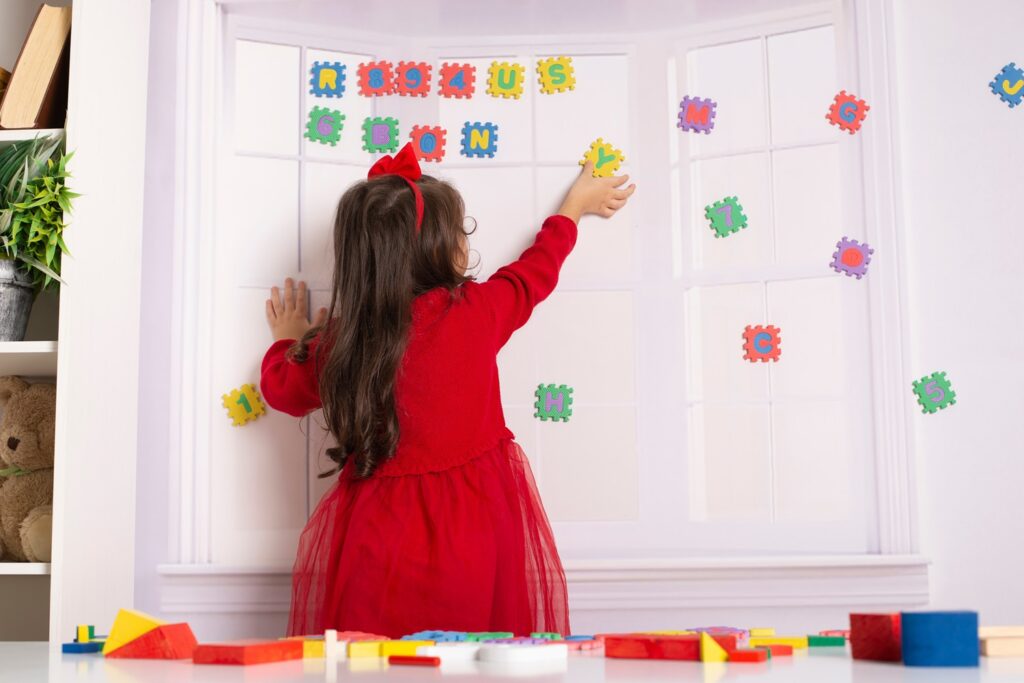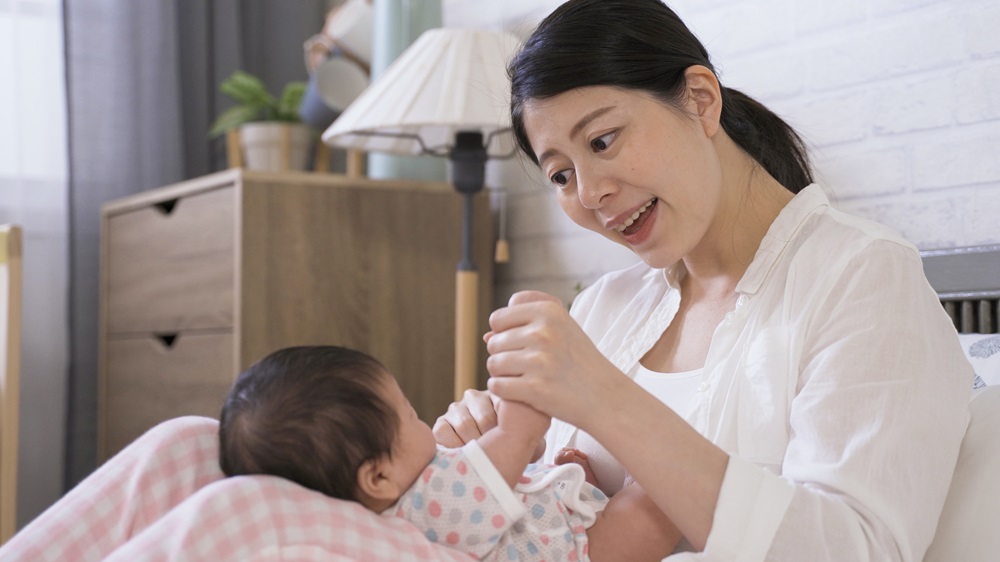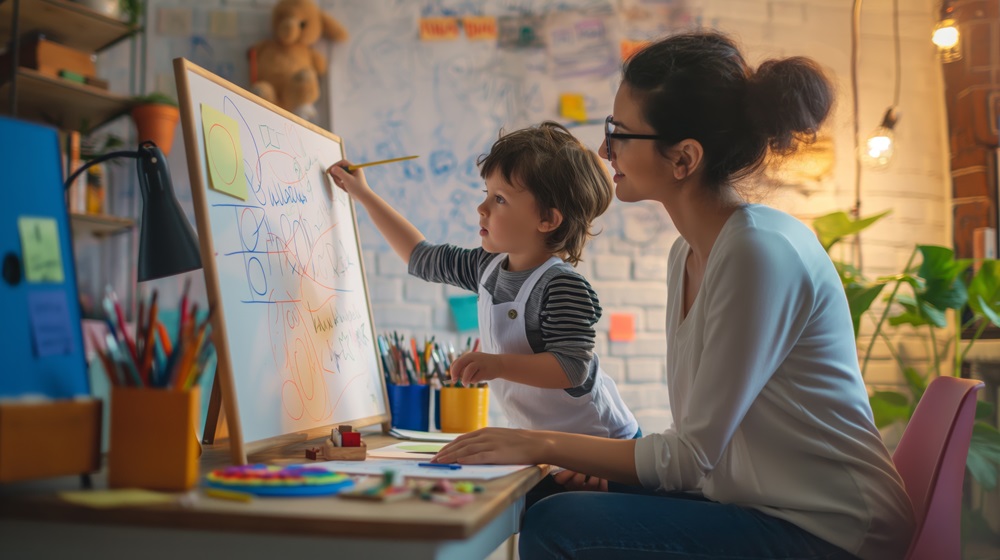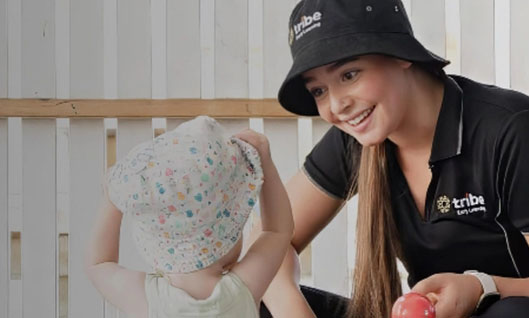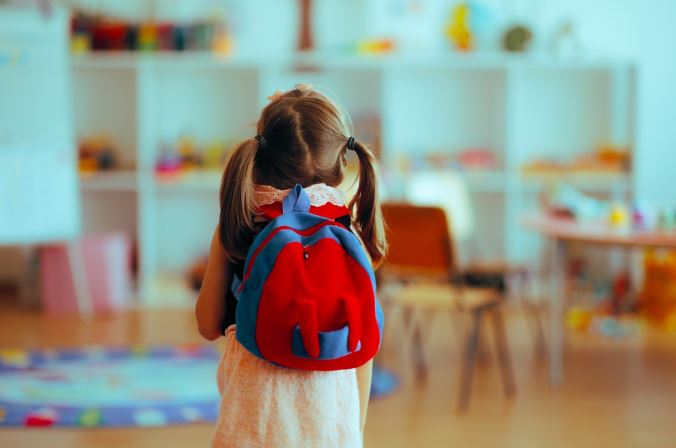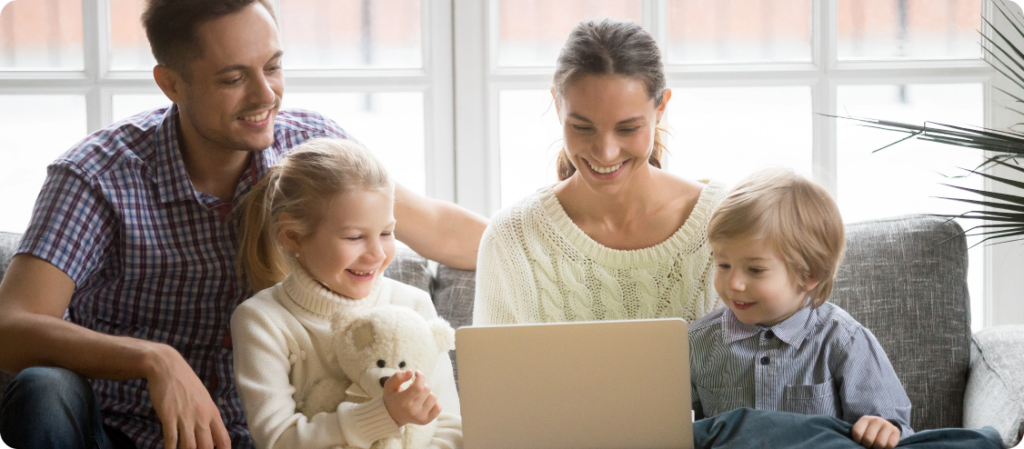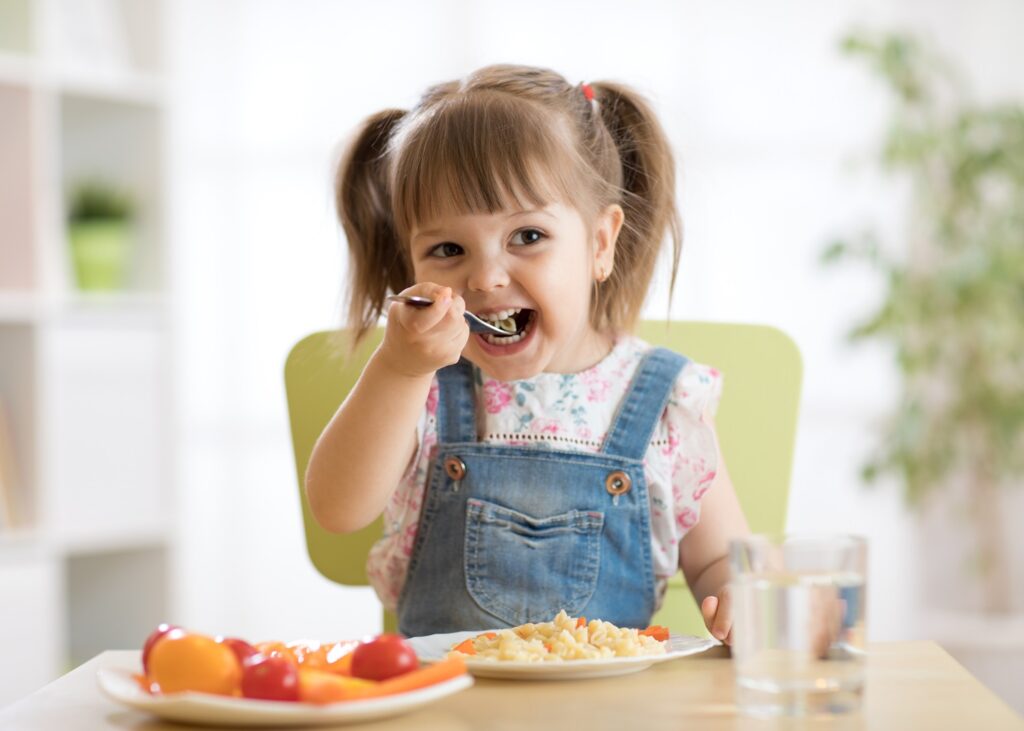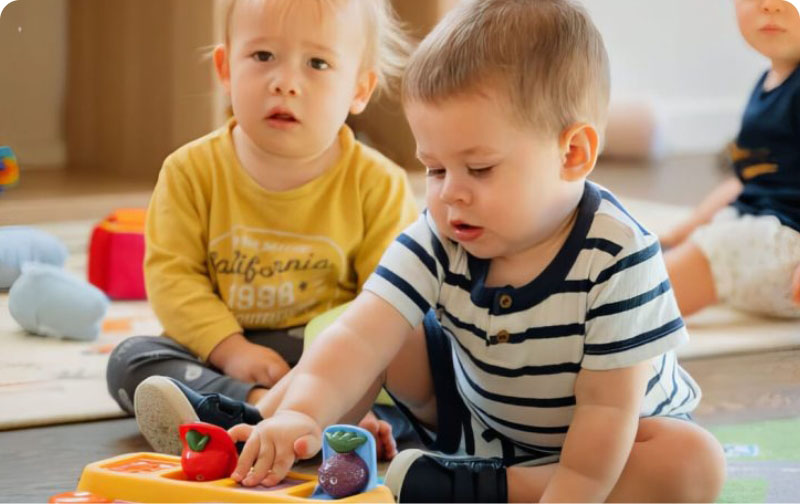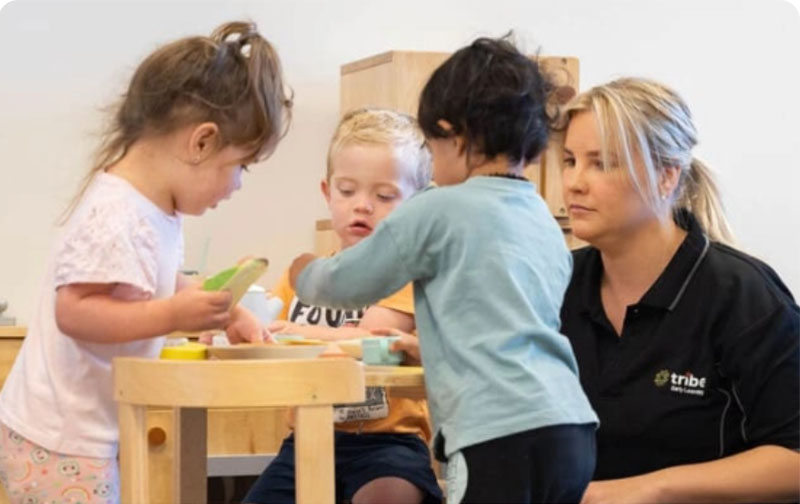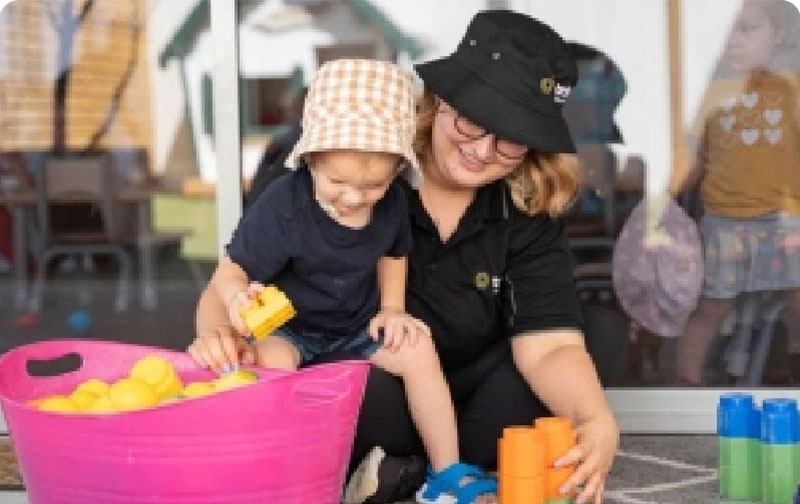While we often think of reading and writing exercises as the main literacy development tools, there are so many other fun activities you can do with your young child.
Here, I’ll cover creative approaches to literacy development, such as storytelling, puppetry, music, and role-playing can ignite your children’s imagination and enthusiasm for language learning.
Quick summary:
- Literacy development is crucial for a child’s overall development and builds the foundation for a lifelong love of learning
- There is no age limit on how young you can include literacy development activities in your child’s life
- Activities like singing, talking, singing, rhyming, storytelling, reading together, playing together, writing, and drawing are all important for literacy development
- Every day activities, such as cooking meals, grocery shopping, and running errands together can help support literacy development in early childhood
- Literacy development can be seamlessly woven into your regular daily routine with creative games, fun crafts, and activities
What Is Literacy Development and Why Does It Matter?
At its basic definition, literacy refers to learning to read and write. However, literacy is about so much more, including communicating through writing, interpreting what is read, and comprehending what is read.
Literacy builds the foundation needed to make decisions, problem solve, socialise, be independent, and do well in school and life.
Promoting Language Development in Early Childhood
Whether you have an infant, toddler, or young child, here are creative literacy activities and ideas to incorporate into everyday life.
As you’ll notice, many of our literacy development ideas involve play-based learning. I am a huge supporter of play-based activities and nature-based play for helping kids grow up happy, healthy, and with a love of learning.
Creative literacy development activities and ideas for babies:
Long before your baby can talk, he or she is already paying close attention to what you say, your tone of voice, and your facial expressions.
- Use rhymes throughout your day
- Sing nursery rhymes or songs to your bubs throughout the day, such as during bath time or diaper changes
- Repeat the sounds your baby makes
- Once your child starts saying simple words, such as “ba ba” for bottle, repeat their request back to them with clear yet simple language: “Yes, I will get your bottle”.
Creative literacy development activities and ideas for toddlers:
- Keep letter magnets on your fridge for your child to play with or for you to create simple words with (“Look, the fridge says ‘Moo’ today. What animal says ‘Moo’?”).
- Read books out loud with your child, including books featuring rhyming and repetition. Encourage your child to engage with the book by asking if they’ll turn a page for you or asking them to act out part of the book.
- I love touch-and-feel books and lift-the-flap books for literacy development. These books are highly engaging and toddlers just love them!
- Engage your toddler in the book you are reading by occasionally asking them what they think might happen next.
- If you read a book about trees, head outside after to look at the different trees in your yard or at a park. Did the book talk about leaves or bark? Feel the leaves or touch the bark to connect the book with real life.
- Go on a nature walk in your backyard or a nearby park and talk about what you observe. Discuss what you hear (wind rustling the leaves), what you see (the shape of the clouds), what you smell (are there flowers blooming?), and other observations
- Collect items, such as twigs, rocks, or leaves from your nature walk and use them in a craft to make nature letters when you get home
- Make numbers or letters with playdough or give your child rolling pins or cookie cutters to make fun shapes and talk about the letters, shapes, or numbers you make
- Here’s one of my favorite literacy games to play with toddlers. Kids absolutely love this spin on classic bingo. Make bingo cards using one letter for each card for a total of 16 cards. Call out letters and let your child mark their space using cheerios, a piece of freeze dried fruit, or other toddler friendly snack.
- Play a household matching game by drawing pictures of items in your house (a door, television, fridge, sink, etc.) and write the name on a different piece of paper. See if your child can match the item’s name to the corresponding picture.
- Let your toddler help with basic, age-appropriate cooking activities such as measuring ingredients, dumping ingredients into a bowl, decorating cookies or cakes, or stirring.
- Write down clues for your child to read for a treasure hunt — for older kids, you can include math problems as part of the clues or little riddles to stimulate problem solving skills. For kids with extra energy to burn, I love adding active ___ to clues, such as “Take 10 hops forward” or “Run to the tallest tree to find the next clue”.
- Play “Letter Go Fish” — Use letters printed out on cards instead of pictures (i.e. “Do you have a letter C?”)
Creative literacy development activities and ideas for young kids:
- Involve your child in mealtime, allowing them to taste ingredients, read the recipe, help measure ingredients, mix things, and talk about what you are preparing
- Encourage your child to write letters to friends or family members and teach them how to address the letters and send them in the mail
- Give your kids a bin of dress up clothes so they can play dress up or create their own play to perform
- Get crafty and make your own puppets together and then let your child put on a puppet show
- Introduce your child to the classic game of “Scrabble” or Bananagrams and have family game night
- As you read with your child, take turns reading (i.e. read one page, then let your child read the next page)
- Let your child help you create a meal plan for the week
- Plan and write a grocery shopping list together and let your child help find and pick out items once you are at the store
- Agree to read the same book at the same time. Once you both finish the book, discuss your favourite parts of it, your favourite character, and if any parts surprised you about the book.
- Every now and then (or make it a nightly routine), pass a jar around at dinner time that has little talking prompts in it (i.e. what was your favourite part about your week, what were you thankful for today, what are you looking forward to next week, what is your favourite season, etc.).
- Make up your own stories at bedtime by doing ‘line by line’ stories together. To do this, start by saying a single sentence of a story. Then your child fills in the next sentence, then you add another, and so on. It’s an amusing activity that is great for creativity and bonding!
Creative literacy development activities and ideas for all ages:
- Take part in nature-based play (here are 35 of our favourite nature-based play ideas for kids to try at home)
- Get out the paints, canvas, and paintbrushes and paint pictures together — talk about why they chose to paint what they did and what inspired it
- Visit the library together
- Let your child help with cards you send out — for a toddler, this may mean scribbling with a pen or markers, for a younger child, have them sign their name or leave a little note in the card.
- Take your child with you on errands — running to the bank, grocery shopping, picking up something from the hardware store, etc. Every day life teaches kids a lot about the world!
- Play “I Spy” with letters. For instance “I spy with my little eye an object that begins with the letter S”.
- Try some feather tip writing in salt — kids love this one! Give your child a tray of salt (put newspaper underneath or do this outside to avoid a mess). Then, have your child use the tip of a feather to write out different letters.
- Have a rhyming competition. Start with something simple, like “fish” and have your child name something that rhymes, such as “dish”. Keep going until someone can’t come up with a word that rhymes.
- When you’re running errands, ask your child what words they notice on stores, street signs, or billboards
Our Learning Activities Are Designed to Help
Language and literacy development can be a natural part of every day life with your child. By involving your child in household tasks, fun games, errands, nature play, and reading together, you can build memories with your child while promoting literacy development.
At Tribe Early Learning, we promote language and literacy development in early childhood through many of our learning activities. From ample opportunities for nature based play to sensory activities to reading aloud, games, and songs, we weave literacy development into everything we do.
Want to learn more about Tribe Early Learning or get a tour of one of our centres? Visit our contact us page to view our convenient locations throughout WA — we’d love to hear from you!
